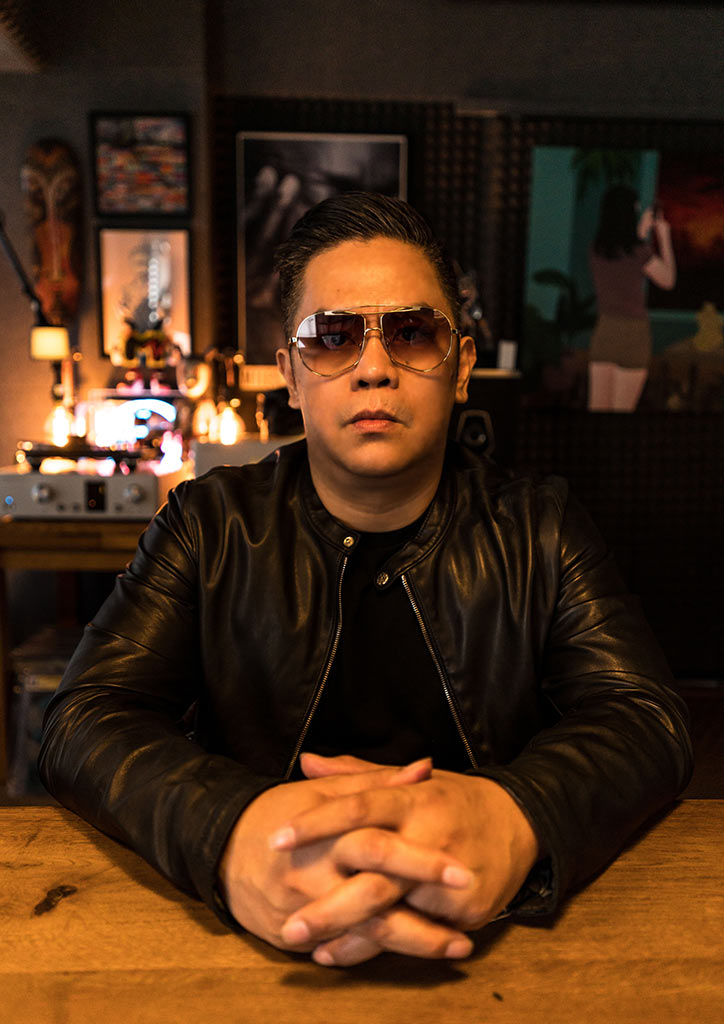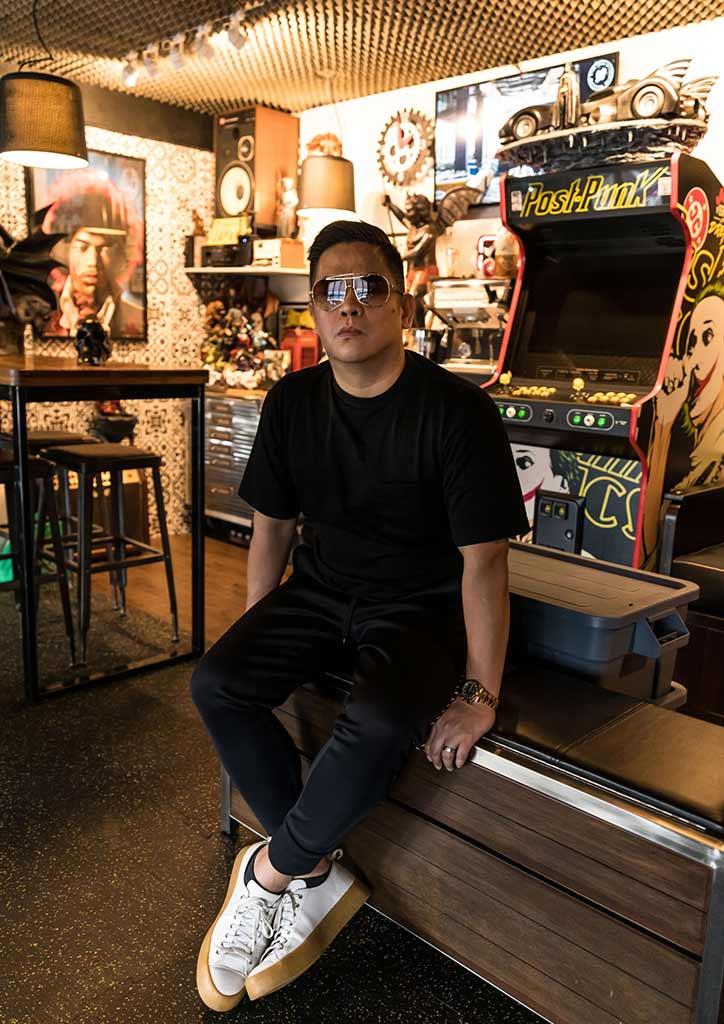The contemporary artist believes that it’s in his character to want to embrace challenges.
“I never called myself ‘The Dark Man of Philippine Art,’” shares Andres Barrioquinto, referring to the moniker that art critics and publications have used to call the contemporary artist.
“That started after the 13 Artists Award [in 2003],” the artist continues. “I think there was this writer or art critic that coined that. The term ended up sticking with me, so I just went with it.”

A casual observer, even without knowing this nickname, will notice this “darkness” in Barrioquinto’s works. Grotesque figures stand out amid stark backgrounds; faces appear strangely calm beneath a sea of flowers, suggesting a sense of suspense and dread; hyperrealist portraits are inundated with surreal colors and intricate details.
While there is that consistent sense of melancholy across his different styles and works, Barrioquinto says that he isn’t doing it deliberately.
“I wasn’t really aware that my works have been giving off a consistent vibe, so I’m not really maintaining any of that. It just comes out naturally, I guess,” he says.
Tumultuous times
Growing up in a rough neighborhood, Barrioquinto admits that his early childhood was filled with struggle and neglect.
“It was extremely violent during the 80s,” he shares. “People were angry and very cutthroat. I was exposed early to violence. I think this was integral in how I was shaped as an individual. Whenever I do anything now, I always push myself to my limits. Somehow, I’m always looking for that feeling of struggle.”
He thinks that all children, at some point, will be interested in drawing and art. “In my case, my early childhood struggles provided that fire that is ever present in my artwork,” he adds.
Without the Internet to look up references, the young Barrioquinto frequented bookstores to get some inspiration.
“It was just all random, so I didn’t really have any specific influences back then. I just checked whatever’s available. While those books may have influenced me, my influences have mostly come from real life: the people around me, and the feelings that respond to such people,” he shares.
Barrioquinto spent his teenage years at the Royden House School in Hong Kong. In 1998, he won Metrobank Foundation’s 15th Young Painter’s Annual National Painting Competition. He then returned to the Philippines in 2000 to study Fine Arts in the University of Santo Tomas.
Early days
At his stay in the university, he became a two-time Benavides awardee for his outstanding artistic achievements. In 2003, he was selected as one of the 13 Artists Awardees by the Cultural Center of the Philippines.
“I was very happy that I became one of the 13 Artists Awardees at a young age,” he says. “I was 27 then, and nobody was buying my work—even my entry for the awarding exhibit didn’t even get bought.”
But he was never discouraged because money was never the motivation for Barrioquinto. “I just kept on doing art because I felt that it’s the only thing I want to do. I didn’t really have a choice,” he admits.
The awards and opportunities have never stopped for Barrioquinto since then. He has had several solo exhibitions across Asia and Europe. He also holds the honor of being the first Filipino to win in the Taiwan Biennial, the Asian country’s premier fine art platform and festival.
In 2018, showcasing his signature detailed, surreal style, he mounted an exhibition at the National Museum, making him one of the few living artists to do so.
Aptly called “Portraits,” the show featured industry leaders, influential patrons, and A-list connoisseurs immortalized in Barrioquinto’s hyperrealist portraiture.
Critical acclaim
These numerous achievements have catapulted Barrioquinto to critical acclaim. However, he still grounds himself in the idea of struggle as a welcome guest. “I think challenges are given in life. I think it’s in my character to want to embrace these challenges. I was born in struggle, so living in it is just natural for me.”
After all, he says, life is a struggle. “Happiness is just a side effect, and it’s always fleeting and unpredictable. Find your largest burden to carry, and bear with it,” the artist notes.
Even amid the challenges of the pandemic, the artist knew how to work around them.

“The pandemic was advantageous to me because I’m an introvert. I had more energy when the world fell silent. I became inspired and more productive. I adapted to the circumstances. I customized my surroundings, I made my own bar, my own gym, my own spa. I had so many realizations during the pandemic, and I’ve never been happier,” he shares.
When asked about the greatest lesson he’s learned as an artist, he sums it up concisely: “Know your worth. People know your worth. They just hope you don’t.”
Looking into the future, Barrioquinto hopes that Philippine art can make a stronger impact on the global stage. “I want local artists to go international. There are so many good Filipino artists. The world is so big; why stay in one place?”





